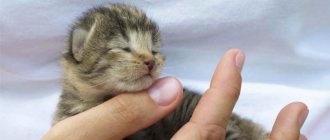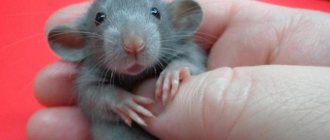A group of Swiss veterinarians and biologists conducted a series of special studies to find out how cats behave towards their owners. The results showed that with the right interaction with animals, owners can literally bask in the love of their furry pets. Joinfo.com shares 10 effective ways to improve your relationship with cats.
How to make friends with a suspicious and aggressive cat
Most cats have difficult personalities.
However, some owners value this quality in their pets. It's not always possible to make friends at first sight. It should be borne in mind that if the owner likes the pet, he will not cause mischief in the apartment. Any adequate owner wants his pet to be calm and completely trust him, and not a furry hooligan who seeks to cause mischief. These animals have developed intelligence, but there are also cats with difficult characters. Why does this happen? The kitten's childhood has a huge influence on this. In order for a kitten to grow up calm and kind, it must be with its mother and brothers in comfortable conditions for at least two months. When the pet lived on the street, before getting into the house, this will manifest itself in its habits. The younger the fluffy, the faster he adapts to new conditions and owners.
Be patient with the new apartment occupant. Give him time to get used to it and start talking to your pet so that he gets used to your voice. If the animal chooses a secluded place in the apartment, then you should not take it out from there. This way the cat will quickly get used to the new living conditions.
When an adult cat appears at home, the situation looks more complicated. If she crawls under a bed or chair, then do not try to pull her out, but it is best to place a bowl of food next to her. After a while, she will come out and appreciate your action. Try not to raise your voice to your pet. When the cat comes to you and shows interest, then let it sniff itself and make sure that there is no danger, and then start petting it. When petting a cat, talk to it in a calm voice. Even if he runs away, don’t be sad. Not everything works out right away.
How to improve your relationship with your cat
Create conditions under which your pet will feel comfortable while spending time together. One key factor for a cat is a sense of security. Therefore, they will not go into the arms of any person who gives them food. The secretive pet becomes much kinder when it eats.
Create an environment for your cat where she feels calm and safe. Your hands should act as a bastion of safety, then the cat will happily approach you. Carry out bathing procedures alone with your pet and in a calm environment. This will help avoid a trust deficit. After water treatments, reward your pet with delicious food, so he will quickly forget about bathing.
Quite a few furry pets can't handle it when the owner is in a bad mood. At this time, they bypass the owner. However, if during the visit there is an owner with a positive attitude, then the cat will behave calmly. Otherwise, the cat will quickly sense the owner’s worries and begin to worry herself, especially considering that the animal is in an unfamiliar environment.
Therefore, if your pet does not completely trust you, then you should be in a good mood before communicating with him. Your furry pet will feel this and will happily accept your caresses and strokes. In any unusual situation, try to speak to your pet in a calm voice and pet it. This way he will understand that if the owner is nearby, he can calm down, regardless of the situation. You should not suddenly throw the cat off if you are going to get up from the sofa. Take your pet in your arms and calmly place him on the floor. It is advisable to give him some kind of treat that will improve the cat’s mood. These animals love stability, so they only like to accept food from their owner. This will help improve relations with the most suspicious cat.
Source
Play, play, play...
Remember that cats are predators and they love to do nothing more than hone their predatory skills through simulated predator-prey situations. While we call it "play", for them it is acting out their base instincts and they will definitely appreciate your help. Believe it or not, cats are usually well aware that you are holding a string to which a “mouse” is tied, stretching along the floor, or controlling a laser. They associate the activity with you, valuing the attention and wanting more of it. Most cats have a favorite toy, so you can play with it at any time by taking it away and hiding it behind your back. The pet will probably notice this and want to join the game.
How to make friends with a cat?
When we get a cat, we imagine how comfortably she will sleep on our laps and wake us up in the morning with a gentle purr. But reality prepares a different scenario: specks of dust are literally blown off the pet, and it grows up unsociable and, more than anything else, loves to climb where it can’t be reached. Why is this happening?
Each cat is individual, each has its own character and temperament. Some pets are more affectionate, others less, and others don’t seem to need affection at all. You never know for sure what qualities your pet will have, but breed characteristics will help reduce the likelihood of disappointment. Study them carefully before settling on a specific breed.
If a cat categorically avoids its owners, is afraid of them and shows aggression, most likely it is traumatized and will need a lot of time to adapt. In such cases, you cannot do without the help of an animal psychologist, who will help you find an approach to the poor thing and correct its behavior.
When your pet’s “cold” behavior is caused by character traits, and not by psychological trauma, you can safely but carefully begin the assault! Our advice will help with this.
The worst thing you can do to an unsociable pet is to physically influence it: hold it in your arms, stroke it against its will, or use force to punish it. All this will lead to the fact that the cat will avoid you even more stubbornly.
What to do if your cat is stressed after moving?
There are several ways to do this. The first is the use of phenibut-based drugs for animals in the form of drops or tablets (for example, “Stop-Stress”). It is necessary to start taking them 3-4 days before moving, since the effect is cumulative. The second method is cat pheromones (for example, “Feliway”, “Relaxivet”).
Interesting materials:
What to do if the mesh on your sneakers is torn? What to do if the alternator belt breaks? What to do if the clutch cable breaks? What should I do if the parcel has been opened? What to do if the parcel arrives at the wrong Nova Poshta branch? What to do if the crankshaft oil seal leaks? What should I do if I lost my electronic ticket for a concert? What to do if you have lost your car warranty card? What to do if you have lost your conscript ID? What to do if you lost something on public transport?
Upbringing
The pet perceives the apartment or house as its territory, where everything is allowed. For this reason, cats can sharpen their claws on tables, wallpaper, and upholstered furniture. You can gently wean them off this habit using a spray bottle.
As soon as your ward is about to sharpen his claws on the furniture, you need to spray him with water from a spray bottle. You will have to repeat the procedure several times until the cat develops a conditioned reflex - without harm to the psyche and health.
Constant gentle control is equally important in raising a kitten and an adult male. For their successes, they must be praised, smiled, and gently stroked on the withers. Even animals with complex personalities thaw out after a while. It is better to reinforce prohibitions with sounds rather than shouting. This could be a palm clap. You need to talk to cats like people - they pick up intonations and over time begin to understand what the owner wants from them.
A few more secrets
Making friends with a female and a male is quite simple if you follow a few simple rules:
- Diversify the diet and do not skimp on the quality of feed. Dry food and canned meat contain all the necessary elements, but cats sometimes want regular table food. If the owner treats them to a piece of chicken or beef, he will demonstrate his generosity and openness.
- Clean the litter box daily (and sometimes twice a day). Cats are clean and squeamish - stale litter and a dirty litter box often cause them to relieve themselves in corners, shoes and other unexpected places.
- Humiliation, infliction of pain, frequent lifting by the scruff of the neck or paws by children with the silent connivance of parents are a common cause of stress, fear and depression in an animal. It does not go away without a trace - hormonal levels and health in general suffer.
- Cats need communication every day, so you need to talk to them, play with them, scratch them so that they don’t feel lonely.
The owner should associate the pets with safety - as soon as they feel this, the ice of mistrust will melt and understanding will appear.
Hissing and attack
Even friendly and affectionate pets can hiss at their owner, hit him with their paw, or scratch him. Nervousness and tension in an apparently calm animal is indicated by a barely noticeable twitching of the ears.
In this state, cats do not need to be touched, especially if they press their ears tightly and retract their heads. Animals behave this way when they subconsciously expect an attack. Paws and claws are part of the defense reaction. If the cat is preparing to attack first, then its ears drop almost horizontally to the sides. At this point, it is better to leave her alone until she calms down.
Conversations
Conversational communication is an effective way to learn to get along with your cat. The human voice sounds to her like foreign speech, but over time she assimilates words and sentences and reacts to them.
When addressing your pet, it is important to use a gradation of tones:
For individuals of the cat family, such a division is understandable, so the response will appear faster.
Another important point is the repetition of phrases so that four-legged animals remember them. These could be the simplest sentences: “Hello!”, “It’s time for lunch,” “Let’s go to bed,” and dozens of similar ones. They need to be pronounced with the same intonation - it will take 2-3 weeks, and the cat will react to the phrases instantly.
Communication requires consistency and logic. Many owners make the same mistake - they pronounce the prohibitory words “no” and “no” softly, with a smile, gently stroking the fur. And cats perceive the tone and actions of the owner in their own way: it is impossible to demand understanding from them if the actions initially contradict the words.
Never hit your friend
Do you hit your friends when you don't like them? Surely not. They would probably take it without delight, just like the cats. Cats react very poorly when hit, and unlike more forgiving animals such as dogs, they will often retaliate and/or become infinitely afraid of you.
The flight attendant advised against taking carbonated drinks and alcohol on the plane.
Drivers in expensive cars often violate traffic rules: findings of Finnish scientists
The penalty for laziness: how to maintain high productivity with low motivation
Having them perceive you as a source of pain is not the best way to improve your relationship. There are other, much better options when it comes to disciplining your cat.
Why do cats hiss: at humans and at each other?
A predator that hisses at people and other animals awakens from time to time even in an affectionate and gentle pet. Any representative of the cat family has the blood of a wild ancestor, so deviations in behavior accompany the mustachioed pet throughout its life. Owners need to understand what provokes such manifestations of aggression and know how to deal with them.
How will the relationship between the two pets develop in the future?
No one is able to predict with one hundred percent certainty how the relationship will develop in the future. The owner’s task is to regulate the cat’s behavior during the first days of acquaintance. Then, when the likelihood of fights drops to zero, the animals will decide for themselves whether to be friends or simply ignore each other.
At best, the “neighbors” will become friends and become good friends. They will play and sleep together, protect each other from strangers. But there are other scenarios. For example, two cats are able to remain indifferent or continue to compete with each other until the end of their lives.
Mechanism of cat hissing
Hissing is a vibration produced by the vocal muscles located in the lower region of the larynx. The sounds are produced during forced exhalation, when the individual moves the lower jaw forward and extends the tongue.
All representatives of the cat family are capable of producing such guttural sounds, but only some breeds can growl or roar. For example, the British, Sphynxes, Maine Coons do not just hiss, but growl very loudly, expressing negative emotions.
A negative reaction is also confirmed by external signs demonstrating irritation and an outburst of emotions. At the moment of aggression, the fluffy:
presses ears tightly to head;
pushes his mustache forward;
closes his eyes, while clearly focusing his gaze;
raises the fur on the withers, tail and along the ridge.
At this time, the animal’s pupils dilate and occupy almost the entire iris. The pet's gaze expresses the entire emotional state. An owner who has carefully studied the habits of his mustachioed friend will be able to explain the specific reaction without difficulty.
Kids begin to show character quite early, thereby expressing their feelings. Kittens make guttural sounds, but weak vocal muscles make them unclear and sound more cute than scary. Their hissing does not come out at all - only the sound of exhalation is obtained.
Common Causes
If you figure out why your pet shows negative emotions, you can avoid conflict and even traumatic situations.
Defense: self, cubs or territory
Not only dogs, but also cute fluffies are able to protect themselves, kittens or their territory from surrounding people or animals. The adult feels like the owner of the home, and therefore experiences irritation if someone wants to encroach on it.
The furry friend will use terrifying sounds to drive uninvited guests out of his territory. Mothers are especially active, who in this way try to drive the stranger away from the nest with kittens.
Manifestation of fear
Specific sounds can be caused by certain fears of the cat, which are usually associated with insufficient socialization or regular physical punishment. The fact that deviations in behavior are provoked by a feeling of fear is indicated by warning poses (standing sideways, half-turned), attempts to inflict injury with claws, and subsequent demonstrative licking of the fur.
A pet may hiss at a vacuum cleaner, at loud guests, or at an unexpected sound or touch. Fright is often accompanied by a fluffy tail.
Aggression
Sometimes a cat's hissing is explained by an aggressive attitude aimed at a specific person or animal with which negative memories are associated. For example, a guest could step on a tail, paw, or offend during a previous visit. Or the neighbor's dog is constantly trying to catch up and sniff the mustache.
The owner himself is capable of provoking aggression. Sharp shouts, frightening gestures or trips to the vet are good enough reasons for a mustachioed friend to hiss. If a pet has not experienced tenderness and affection from a person since childhood, then he will begin to scream and hiss at him during any attempts to get closer.
Unmotivated aggression is often caused by sexual desire or hormonal imbalance. If a cat hisses at everything for no reason or reason, it is better to take him to the vet and have him neutered. The same applies to females.
Illness or state of anesthesia
If a gentle and affectionate purr begins to demonstrate repeated aggressive behavior, this may indicate the presence of health problems. Among the diseases that accompany inadequate reactions are:
food and chemical poisoning;
An injured animal, in pain, will hiss and growl at a person who wants to help. Operated pets who have not fully recovered from anesthesia and have lost the ability to navigate in space react the same way.
Trying to communicate something
Sometimes a cat is forced to hiss to attract the owner's attention. This happens after the mustachioed friend repeatedly meowed to the person, but he did not respond. In this case, the fluffy feels displeased and makes frightening sounds.
This behavior is most often demonstrated by poorly raised or overly spoiled pets. If the mustache constantly behaves this way, then measures must be taken to re-educate it.
Preparing the house
To minimize the problems that will arise with a new pet, prepare your home/apartment in advance for this event.
What needs to be done to create a comfortable living environment for new and old residents:
- Provide each animal with its own litter tray, place and utensils for eating, and a place to sleep (hammock, lounger, bedding, house, basket). This will reduce competition between cats and reduce stress.
- Choose similar bowls, trays and beds. This is to prevent cats from feeling that you are favoring someone else.
- Place food and water bowls in the same room, but at a safe distance. When eating, animals experience the most competition and stress. Cats should see each other while eating, but be protected from attacks by their relatives.
- Create separate elevated areas for each pet: cat trees, vertical units and cabinets, wall shelves. Cats love to watch what is happening from above.
- Provide cats with houses for playing together, tunnels, cardboard boxes with holes, and play complexes. These should be spacious structures with several exits. Cats should be able to escape from another pet while playing - they should feel safe.
- Buy your own toys for the new resident. To reduce stress, at first do not play with your cats' toys with the newly arrived animal.
- Get ready to give love and affection to all the inhabitants of the house equally. Jealousy towards the owner can provoke conflict.
Hissing at people
Often, pets begin to show dissatisfaction with loved ones and family members. However, strangers cause even more negative emotions.
Why does a cat hiss at its owner?
Affectionate purrs are always expected to be friendly to their loved one. But there are often times when a domestic cat starts making unpleasant warning sounds for no obvious reason. Why do cats hiss at their owner?
Fluffy recently found himself in a new family and did not have time to get used to other living conditions.
An unfamiliar odor may emanate from the person, or the owner’s behavior may have changed dramatically. This reaction is caused by a loved one returning from vacation or after a business trip.
The arrival of a new person in the family. This is how a cat reacts to a baby, whom it perceives as a threat.
The owner regularly teases the pet, pulls its tail or does something unpleasant.
Language is the path to understanding
Animal psychologists say that cats make more than 100 sounds. Their volume, frequency, expressiveness, and intonation change depending on the mood of the pet. With the usual “meow” and “mur-mur” males and females actually express:
- anxiety;
- fear;
- irritability;
- impatience;
- request.
The owner needs to learn to understand their language and pay attention to their habits and behavior.
Hissing at other animals
The mustachioed purr can demonstrate dissatisfaction and aggressive behavior towards its relatives, kittens or other pets.
For adult cats and female cats
All representatives of the cat family are considered loners. Even when living in the same house or apartment with people, your pet wants to feel independent.
Therefore, the cat hisses at the new cat, trying to drive the stranger out of the territory that it considers only its own. Females are more jealous of their owner and everything that surrounds her. Adult males perceive new neighbors more calmly, taking them under their protection. But other males are treated as competitors.
Aggression and manifestations of discontent are a defensive reaction that lasts until the adult individuals come to terms with living together and divide the territory in half. A person’s task is to make friends with pets with the least loss for both parties.
For kittens: ours and others'
Most often, sterilized individuals who have never given birth hiss at other people's kittens. They are afraid of strange creatures that smell of milk and another female.
A mother’s emotions towards her babies can be caused by various reasons:
Mom calms the children down and lets them know to be quiet and not attract attention.
The female trains the babies, teaches them aggressive behavior so that in the future they can stand up for themselves.
If the kitten is picked up too early, its smell will become foreign to the mother.
A cat hisses at a kitten if he bites her nipple painfully while feeding or if she has run out of milk.
Sometimes a mother drives a weakened baby away from her in a similar way, not wanting to waste milk on him. This is how the natural instinct of natural selection manifests itself. The female does not want to waste her energy on him. Mothers are also aggressive towards older children, considering them competitors.
On other pets
The perception of other animals unexpectedly appearing in the house may not be immediately positive. Screams, hissing and growling will inevitably accompany the first meeting of new neighbors. Owners with mustaches especially cannot stand dogs.
Even if the dog does not pretend to seize someone else's territory, the cat will continue to react negatively to his presence. Relations between them will improve over time, but only a person can speed up the process of reconciliation. To do this, the owner must pay enough attention to each pet, taking responsibility for raising both.
Establishing direct contact
Do not try to make a kitten happy with affection without making sure that the animal is ready for this. Start with simple steps:
- wait until the kitten itself shows interest in you - it begins to rub its cheeks against your legs, raising its tail high. Cats have glands on their cheeks and on the sides of their bodies, the secretions of which they use to mark their territory. By rubbing against the owner, pets mark you with their secret, which means they are ready for contact;
- before petting a cat approaching you, let it smell it to understand whether the animal is ready for close contact;
- Do not try to show affection towards the kitten prematurely. Take a comfortable position, wait until the pet comes to you.











